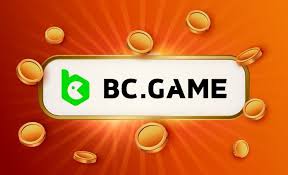Understand the Importance of Move Your Stake in Gambling

If you’re involved in the world of gambling, you may have heard the phrase move your stake. This term encompasses a variety of strategies that can lead to more effective betting, better management of finances, and the potential for increased winnings. Understanding how to effectively manage your stakes is critical for both new and experienced gamblers alike. In this article, we will dive deep into the significance of moving your stake, various strategies that can be employed, how to implement them, and the potential benefits they offer.
What Does Move Your Stake Mean?
“Move your stake” generally refers to the practice of adjusting your bet amounts based on specific criteria such as performance, bankroll changes, or personal strategy. This method allows gamblers to stay flexible and responsive to the outcomes of their bets and the fluctuations within their gambling session. A well-considered approach to moving your stake can increase your chances of turning a profit while simultaneously reducing the potential risks involved.
The Importance of Stake Management
Effective stake management is essential in gambling for several reasons. Firstly, it helps players maintain control over their bankroll. Betting too much in a single wager can lead to catastrophic losses, especially in volatile gambling environments like sports betting or casino games. By moving your stake wisely, you can shield yourself from significant losses while positioning yourself for profit.
Secondly, stake management allows for adaptation to your current success or failure. If you find yourself winning consistently, increasing your stake may be beneficial. Conversely, if you’re on a losing streak, moving your stake to lower levels might help preserve your remaining bankroll, allowing you to continue playing without seeking to recover losses through rash betting.
Strategies for Moving Your Stake
1. Progressive Betting

One common strategy is progressive betting, wherein you increase your stake after a win and decrease it after a loss. This approach can help capitalize on winning streaks while minimizing losses during downswings. Players often adopt either a flat progressive or a more aggressive form of progression, depending on their comfort level and risk tolerance.
2. Percentage of Bankroll
Another effective approach is to stake a set percentage of your total bankroll for each bet. This method ensures that your stake will adjust automatically with your current bankroll, maintaining proper risk levels. For example, if your bankroll is $100 and you decide to bet 5%, then your stake for that bet would be $5. If you win and your bankroll increases to $120, your next stake would be $6.
3. Value Betting
Identify opportunities where the odds offered by bookmakers are favorable compared to the actual probability of the outcome. When you find such value bets, increasing your stake accordingly can yield substantial returns. This requires a well-developed understanding of the games, events, or players and should be coupled with rigorous analysis.
Psychological Aspects of Stake Movement
The psychology behind moving your stake should not be overlooked. Psychological factors such as excitement, anxiety, and emotional control play a significant role in gambling behavior. A well-thought-out strategy for moving your stake can help mitigate the emotional ups and downs of betting.
For instance, if you tend to feel panicked during losing streaks, having a predefined strategy for reducing your stake can help you adhere to your plan instead of making impulsive decisions. Understanding your psychological triggers can lead to a more disciplined approach, ultimately enhancing your chance for success.

When to Move Your Stake
Knowing when to move your stake is arguably just as important as knowing how to move it. Some points to consider include:
- Performance Trends: Monitor your winning and losing streaks. Adjust your stake as necessary based on recent performance.
- Bankroll Changes: Keep a close eye on your total bankroll. If it fluctuates dramatically, it can be prudent to move your stakes in line with the overall changes.
- Changing Markets: Be aware of changes in the betting market, such as injury reports in sports betting or trends in casino games. Adapting your stakes in response to these changes can be beneficial.
The Risks of Not Moving Your Stake
Failing to move your stake appropriately can lead to a range of issues:
- Depleted Bankroll: Mismanagement can quickly deplete your funds, leaving you unable to bet effectively.
- Emotionally Driven Decisions: Sticking rigidly to one stake can lead to emotional decision-making, especially during stressful situations.
- Missed Opportunities: Not adjusting your stakes can mean missing out on beneficial betting opportunities created by changing odds or conditions.
Conclusion
Moving your stake is an essential aspect of effective gambling that can maximize your potential for success while minimizing risks. The strategies outlined above, such as progressive betting and percentage-based staking, can help you navigate your gambling experience with greater ease and efficiency. Remember to focus not only on the mathematical aspect of betting but also on the psychological side to maintain discipline and control.
Incorporating the concept of moving your stake in your gambling strategy can lead to a more structured approach that enhances your overall enjoyment and success. As you continue to learn and adapt, you’ll find that a well-managed stake will help create a more sustainable gambling practice.